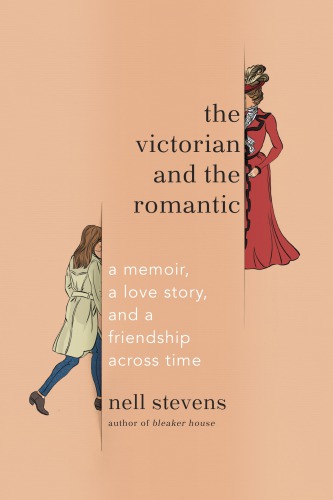
The Victorian and the Romantic
A Memoir, a Love Story, and a Friendship Across Time
کتاب های مرتبط
- اطلاعات
- نقد و بررسی
- دیدگاه کاربران
نقد و بررسی

April 1, 2018
Struggling with both her dissertation on the artistic expatriate community of 19th-century Rome and her relationship with American screenwriter Max, British author Stevens noticed parallels with the travails of one of her subjects--Elizabeth Gaskell, who fled Britain after completing a masterly work on Charlotte Brontë and found both impossible love and shocking betrayal. Another genre blender, as with her memoir Bleaker House.Cleeves wraps up her wondrous "Shetland Island" series; McGeorge launches his writing career
Copyright 2018 Library Journal, LLC Used with permission.

June 1, 2018
Two stories intersect 150 years apart in this unusual historical memoir.Completing her doctorate in Victorian literature, Stevens (Bleaker House, 2017, etc.) chose to focus on the work of Elizabeth Gaskell, a close friend of Charlotte Brontë who was tasked with writing her biography. Studying Gaskell with uninhibited obsession, she quickly noticed the parallels between her life and that of her subject. "I had never encountered a writer who could fill a page so entirely with herself....I was caught up in her life almost instantly," writes Stevens. Just as Gaskell's book, The Life of Charlotte Brontë, was due for publication, she escaped to Rome to avoid any criticism of her work. Ultimately, Gaskell's book "took two years to write and more pain and worry than you could possibly have anticipated. There were so many people to insult....There were so many people, you said, whom you wanted to libel." In the process, Gaskell met the love of her life, the notorious critic Charles Eliot Norton. This escape was a trigger for Stevens, who, in 2013, began devouring her letters and imagining what her life must have been like. Meanwhile, Stevens was also dealing with her one true love, Max, who was elusive and reluctant to own up to his feelings. Stevens weaves a text that oscillates between the late 1850s and the mid-2000s, systemically identifying parallels between her and Gaskell's respective romantic lives and underlining the different roles women played in these two very different societies. Though the result in an interesting and beautifully written contrast, the intention behind the book remains unclear, and readers may feel adrift at certain points.While the book occasionally lacks direction, readers will find comfort in the fact that Victorian stories are usually entertaining, and Stevens knows how to tell her own with literary punch.
COPYRIGHT(2018) Kirkus Reviews, ALL RIGHTS RESERVED.

July 16, 2018
Stevens (Bleaker House) movingly interweaves her love life with that of 19th-century English novelist Elizabeth Gaskell in this lyrical work. In 2013, Stevens, a graduate student studying mid-19th-century British expat life in Rome, fell in love with an emotionally distant American named Max while both were pursuing advanced degrees. As she fought for Max’s attention, she began to explore the relationship between the married Gaskell and the younger, aloof American critic Charles Eliot Norton, with whom Gaskell fell in love while on holiday in Rome in 1860. She alternates the first-person chapters of her own life with second-person chapters on Gaskell’s. When Stevens decided to move on from Max and look for love elsewhere, he suddenly became romantically involved with her—but the relationship was fraught and ended with Stevens so distraught that she couldn’t “think about anything that isn’t Max, and at some point overnight I must have crawled onto the floor.” Eventually, Stevens rewrites her own ending, offering three outcomes to her story—the one that actually happened, and two others she imagines. She also gives Gaskell an alternate ending to her romance. Steven nimbly explores the complexities of unrequited love, and of the camaraderie she formed with a writer who lived more than a century earlier.

July 1, 2018
A lover of research, Stevens (Bleaker House, 2017) falls under the spell of Elizabeth Gaskell, Victorian writer and wife of a dull parson. Fearing fallout from her biography of Charlotte Bront�, Gaskell left England for Rome, where she met Mr. Norton, a charming younger man with whom she felt a deep connection. For a few months, Gaskell enjoyed the stimulating company of Norton and others, Nathaniel Hawthorne among them, and, afterward, would recall those days as the tip-top of her life. In the present, Stevens wrestles with her PhD, which includes her study of Gaskell, and unrequited feelings for a younger man, Max. Just as she's ready to end things with him, he declares himself. For a time, their relationship fares better than her academic career, but the affair eventually falters. Stevens alternates chapters between her own life and her discoveries of Gaskell's, using the device to great effect. When Norton finally visits Gaskell, a perfectly nice visit essentially goes nowhere. Stevens encounters much the same with Max. Such juxtapositions add up to a delightful read.(Reprinted with permission of Booklist, copyright 2018, American Library Association.)

























دیدگاه کاربران